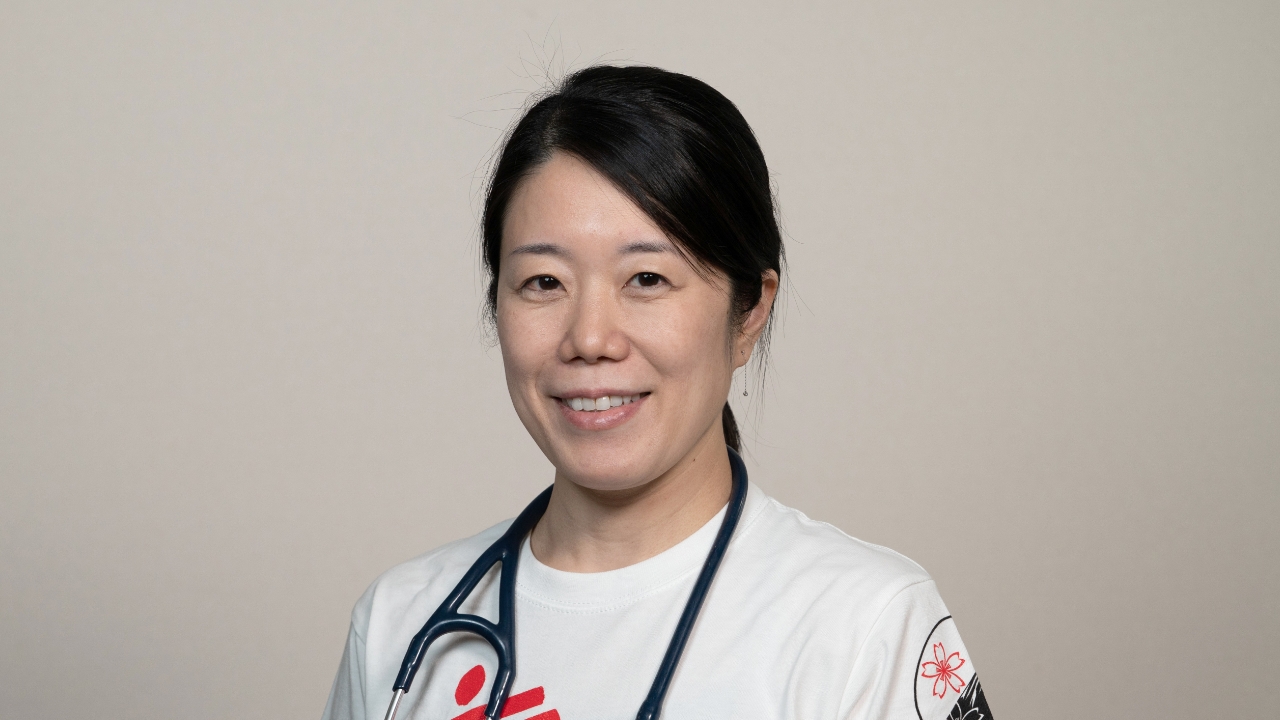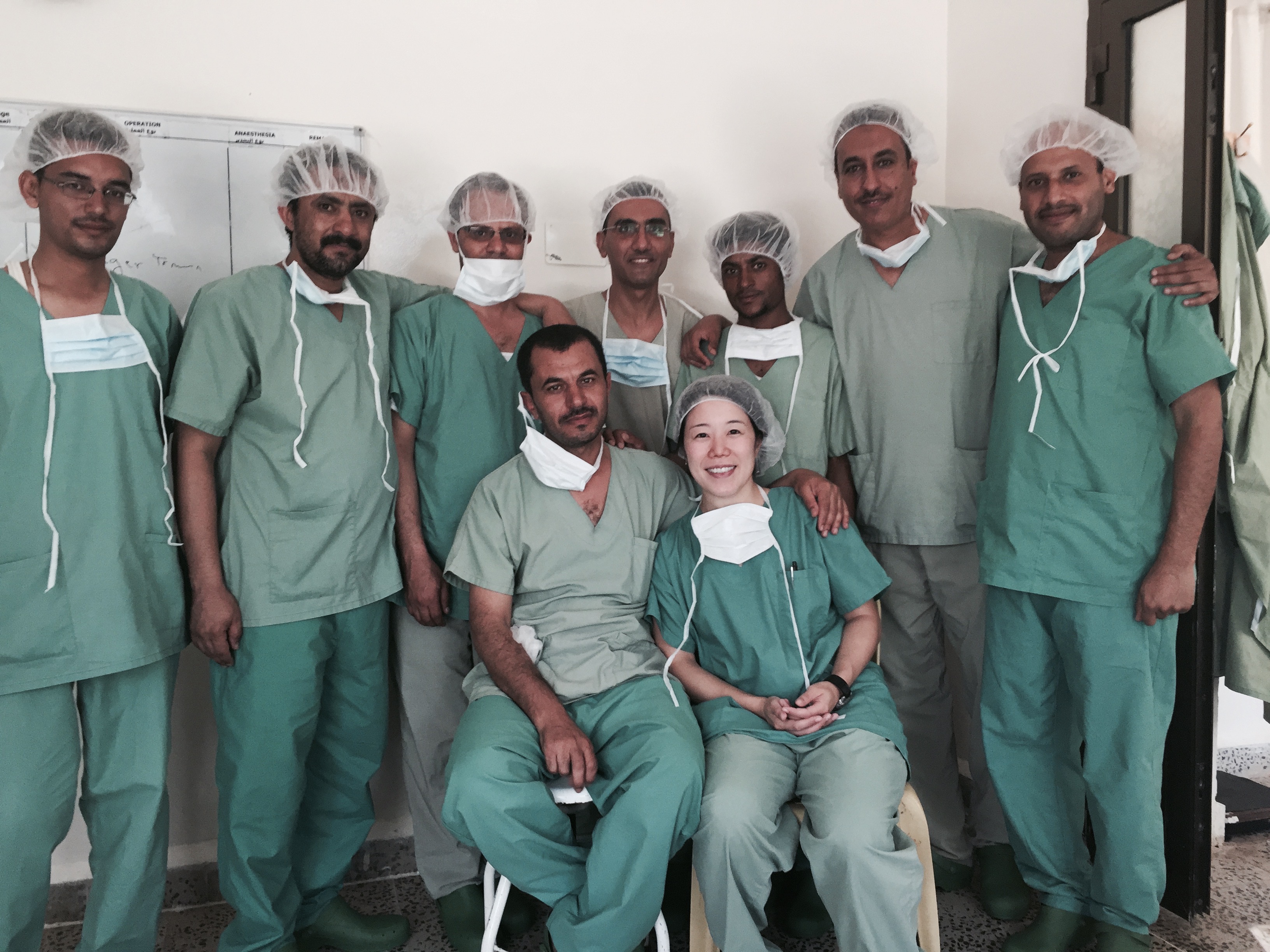ASOURCE®TIMES

国境なき医師団日本会長・救急専門医
中嶋 優子
札幌医科大学卒業。沖縄米海軍病院で初期研修。浦添総合病院、都立墨東病院などを経て米国医師国家試験に合格。米国で救急専門医の資格を取得。高校生のときMSFの活動に憧れていたことも医師になるきっかけに。2009年にMSFに登録。17~20年MSF日本理事、19~20年同副会長、22年3月より現職。
世界中からスタッフを募り、紛争地をはじめ十分な医療が受けられない地域に人道援助を続ける「国境なき医師団(MSF)」。MSF日本会長である中嶋優子先生に人道援助活動の実情に加え、ご自身の経験も踏まえたうえで、この活動に参加する医療者へのメリットを伺いました。
私が「国境なき医師団(以下MSF)」の活動を開始したのは2009年のことです。米国に渡り、救急専門医のトレーニングを行っていた頃で、4年間の研修期間中に設けられていた選択期間を利用して参加しました。MSFでは紛争地などに派遣されるためには医師として独り立ちしていることが条件になるため、すでに専門としていた麻酔科医として最初の赴任地となったナイジェリアに赴きました。以来、パキスタン、シリア、南スーダン、イエメン、イラクなどアフリカ・中東の国々で人道援助に取り組んできました。
また、2022年3月にはMSF日本の会長に選出されたため、日本やアジアを代表してMSF全体の支援戦略会議で発言するほか、国内においてはMSF日本の運営を率いたり、人道援助に関する啓発活動を行ったりすることも私に与えられた重要な役割となっています。
現在、MSF日本に登録している海外派遣スタッフは約300名で医療職と非医療職の割合はおおよそ2:1です。医療職のうち最も多い職種は医師(約100名)で、残り100名が看護師、助産師、薬剤師、心理士、疫学専門家といった医療スタッフです。MSFは世界70か国余りで400以上のプロジェクトを実施しており、その多くが緊急性の高い人道援助です。日本からもアフリカ・中東地域を中心に年間100人ほどを派遣し、医師や看護師などが30か国余りの国々に数週間~1年ほど滞在し、医療活動に従事しています。日本は一般外科をはじめ、産婦人科、整形外科、形成外科、麻酔科などの外科系医療に強いという世界からの評価があり、また日本国籍のパスポートは国を選ばずビザが発給されやすく、他国のスタッフが行けない地域にも行くことができるため、日本人スタッフはとても重宝されています。
MSFへの登録は年齢制限の上限がないため、働き盛りの30~50代だけでなく、60~70代の医師たちの中にも自分が培ってきたスキルを生かし、人道援助に貢献する人が少なくありません。先進国の医療現場と異なり、MSFが活動する国々の医療資源は限られており、旧式の薬剤や機材、設備に対応しなければならないこともあります。その際、ベテラン医師が受けてきたトレーニングや若い頃に修得した技術が役に立つ場面が実に多いのです。
一方で、さまざまな制約のある医療環境は、若手医師たちの対応力を促したり視野を広げたりすることに有効です。実際に私も他国の医師や医療スタッフと協働しながら不測の事態に直面する中で、対応力がさらに高まりました。そして、自分の視野が開け、医療の幅が広がっていくのを実感しました。また、薬剤の使い方をはじめ、各国で創意工夫している医療技術を知る貴重な機会にもなり、お互いに勉強になることも多々あります。例えば、アフリカのマラウイで出会ったフランス人医師の麻酔方法は私にとって画期的でしたし、整形外科下肢領域の症例に行っていた私の腰椎麻酔は、全身麻酔で行うことが慣例となっていた欧州の医師たちには新鮮だったようです。人道援助といいながら個人の医師が成長するうえで得られるリターンも大きいのです。

2015年、麻酔科医としてイエメンに派遣されたとき、ともに活動した現地の手術室スタッフとの一枚。
海外の人道援助活動に医療スタッフを派遣することは人材育成の観点からいっても効果的であると思われますが、国内の医療機関で働きながらMSFの活動に参加するのは難しい現実もあります。医療スタッフの中には医療機関に入職する際、雇用契約の条件の一つに人道援助活動に従事する期間を確保できることを設定している人もいます。米国の医療機関で働く私も同様の契約を結び、MSFの活動に参加していますが、日本においては少数派です。職場の理解が得られないため、アルバイト契約で働く人や、退職してから参加する、あるいは転職して次の職場に移る期間を利用して参加するといったケースもあります。
「日本の医療現場で磨いたスキルを医療が行き届いていない国々で生かし、そこで働くことによって得た経験や知見をもとに自分のスキルをさらに高めていきたい」という希望を持つ若手医師は少なくありません。しかし、彼らからは「日本の医療現場で、こんな魅力的な働き方はできない。だから、その可能性がある米国で働きたい」とよく相談を受けます。これは人材流失にもつながり、大変もったいないことだと思っています。
日本では2024年から医師の働き方改革が始まります。各医療機関にはタスク・シフト/シェアを推進し、医師の負担を軽減し、各職種の業務範囲の拡大を目指すことが課せられますが、医師の働き方を見直す際、さまざまな活動に使える期間を確保する仕組みも取り入れていただくと、人道援助活動を自らの糧にしようとする意欲のある若手医師の希望も叶えられるのではないでしょうか。こうした人材をサポートすることは医療機関の質を高める点においても有益です。人道援助活動に対するご理解とご支援をお願いします。